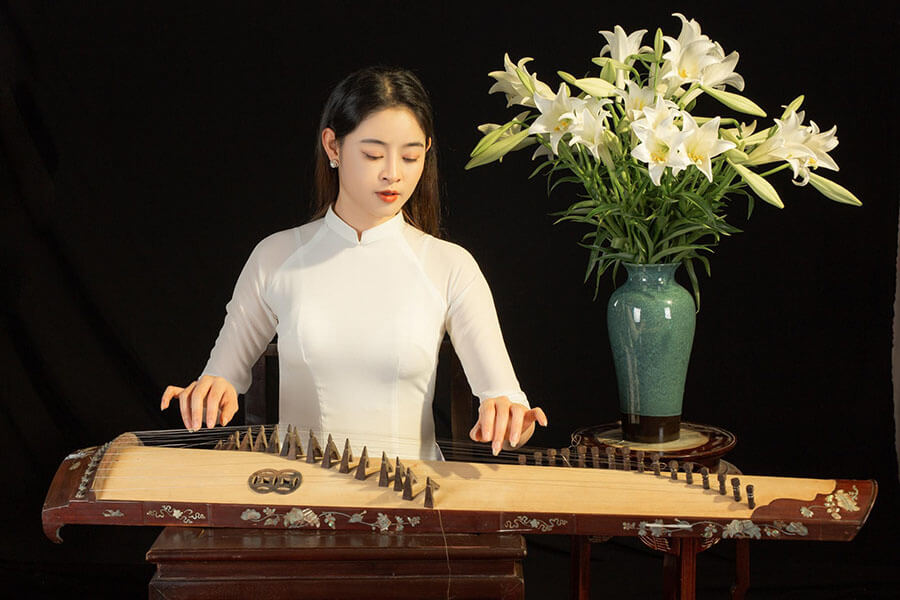
Photo: Collected
Folk music is an indispensable part of Vietnamese culture as some of it can be dated back thousands of years. To Vietnamese people, not only does traditional music prove the talent and creativity of their ancestors but it also nurtures the Vietnamese rich and long-standing history. In this article, we would like to introduce five Vietnamese intangible cultural heritage to help you get a good glimpse into our people, history, and heritage.
1. Quan ho Folk Singing
Originating from the northern province of Bac Ninh, specifically on the riverside of Cau River, Quan ho is a kind of Vietnamese folk music that involves two groups (male and female) singing back and forth. You can imagine Quan ho as a melodic and rhythmic dialogue about the emotions of love and sentimentality as encountered by young individuals, which is the prevalent subject of this kind of music.
When performing Quan ho, “liền chị” a group of female singers will wear traditional Vietnamese garments, including nón quai thao (headpiece), khăn mỏ quạ (scarf), and vibrant dresses with multiple layers, whereas “liền anh” male artists’ outfit includes the iconic black umbrella, the head turban known as khăn xếp, and long dresses.
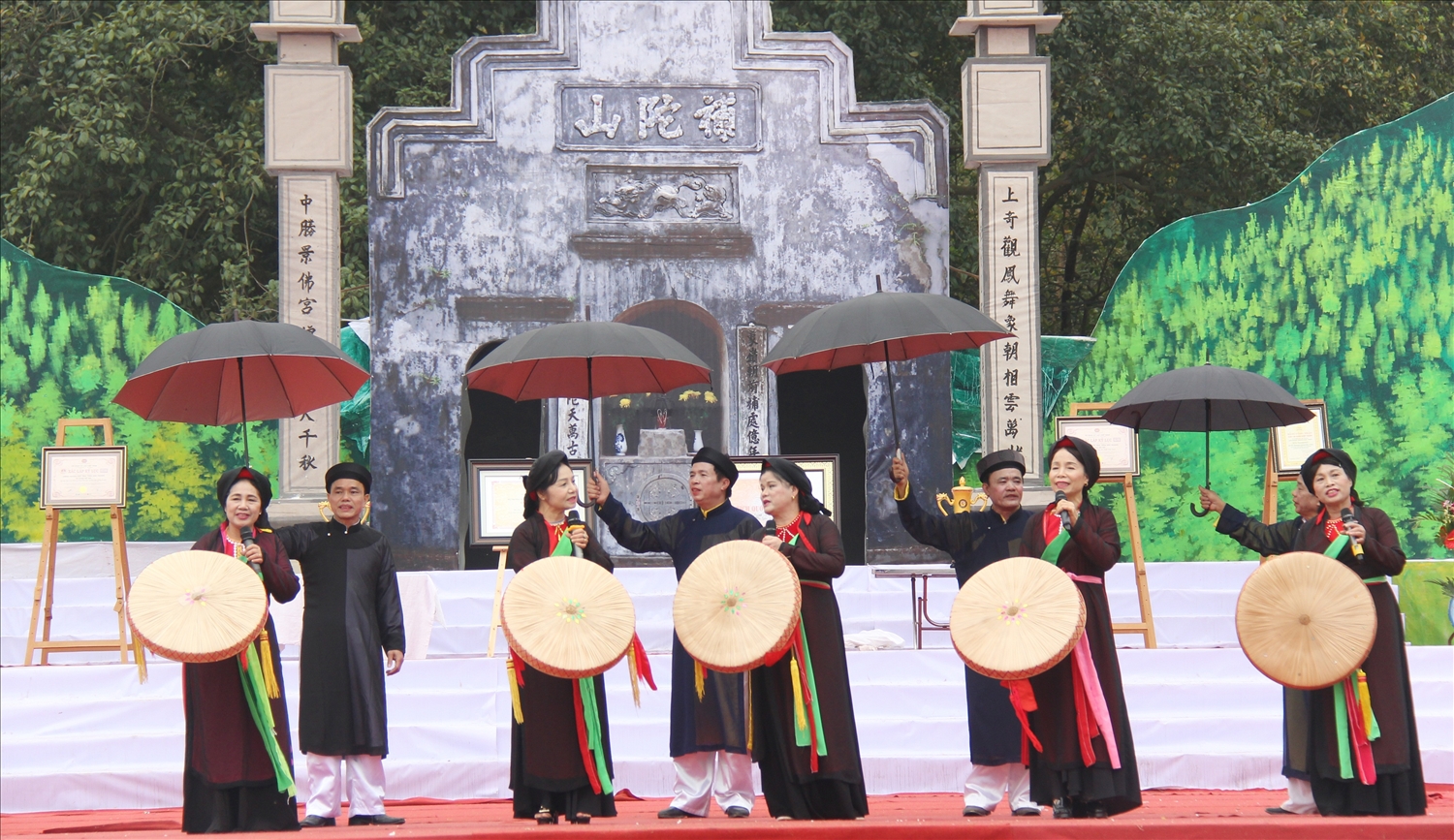
Photo: HAHANA
This cultural activity, which derived from the singing hobbies of Vietnamese rustic farmers to help mollify tiredness and hardship in labor in the 13th century, was recognized as a UNESCO Intangible Cultural Heritage practice in 2009.
2. Nha Nhac (Hue Royal Refined Music)
UNESCO recognized Hue Royal Refined Music as a Masterpiece of the Oral and Intangible Heritage of Humanity in 2003.
First introduced in the Ly Dynasty and reached to its peak in the Nguyen Dynasty, Nha Nhac was often performed on important, solemn occasions such as coronations, funerals, or welcoming envoys from other countries with elegant lyrics, splendid costumes, and a manner of respect.
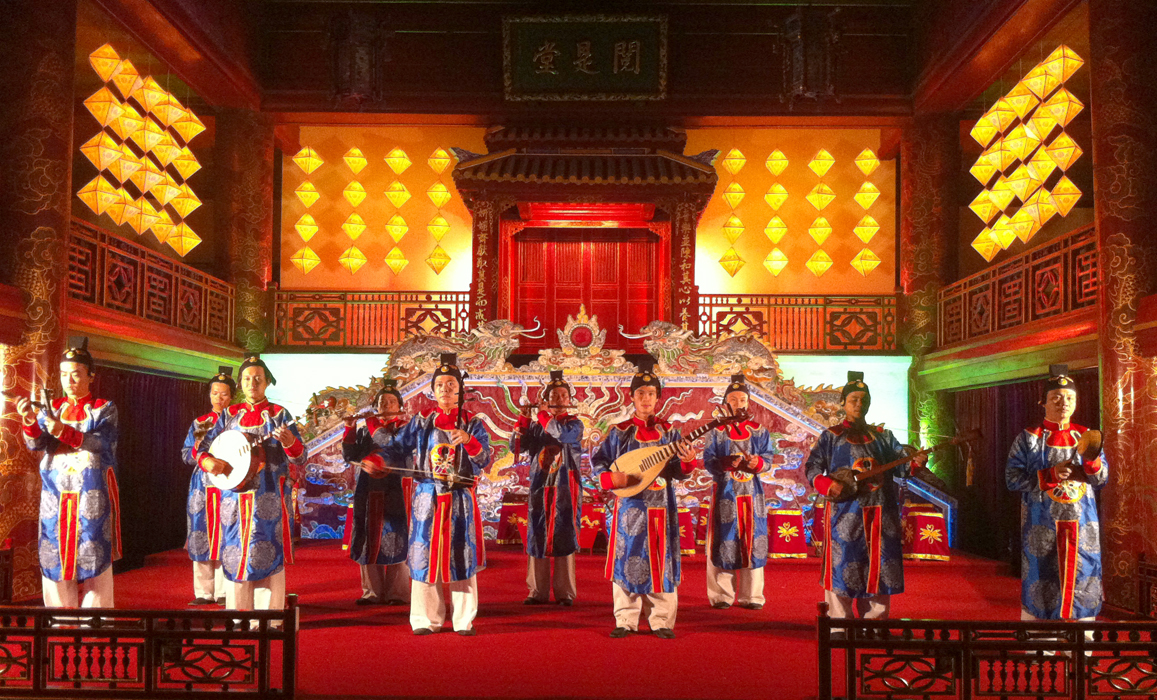
Photo: thegioidisan.vn
Therefore, royal court music is considered a symbol of the longevity and prosperity of the feudal monarchy. Musical instruments are sculpted carefully and constructed more sophisticated than folk instruments, including the moon lute, the Chinese four-chord lute, the Vietnamese two-chord fiddle, the bamboo flute combined with the percussion, etc, creating pure sounds rich in emotion.
King Bao Dai stepped down from his throne, signifying the conclusion of the feudal rule in Vietnam and the end of The Royal Refined Music. However, it continued to live forever with the national culture when we still hear the singing on the Huong River, in ancient Duyet Thi Duong, and in the hearts of every Vietnamese citizen.
3. Ca tru
Ca tru is another folk music from Northern Vietnam, which like numerous other Vietnamese arts, emerged as a source of amusement for the royal court. The material covers a wide range of genres, including romantic poetry, epics, philosophies, and teachings. As a result, those who participate in Ca tru art are typically skilled in writing, intellectualism, poetry, and music.
The name “ca tru” (tally card songs) is said to originate from the scene: the men presented their purchased cards to the woman they chose so she would sing what was written, and then she could receive payment based on the number of cards she performed.
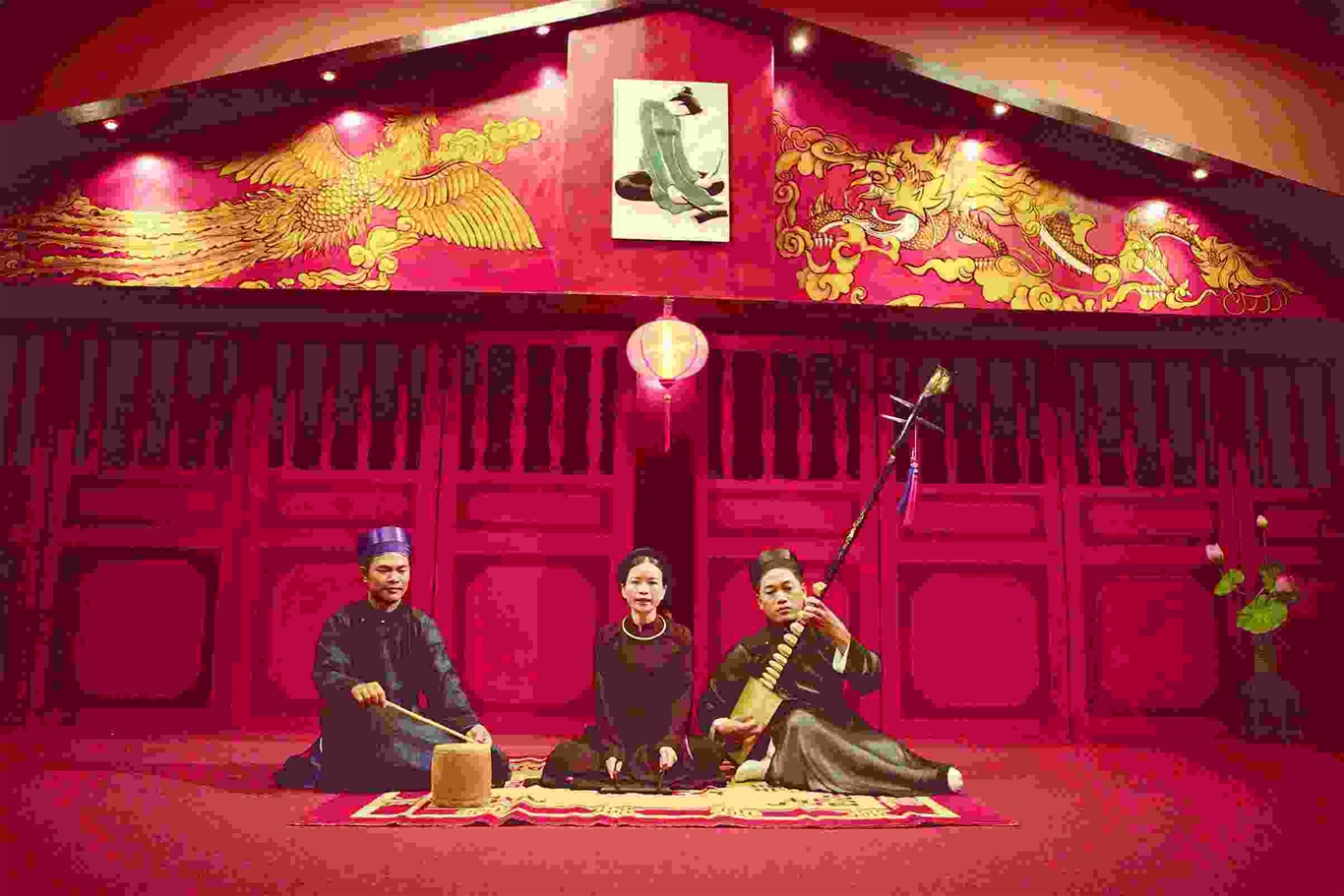
Photo: Internet
This singing form is special because only a female singer is on stage with a lute player and a spectator. The female singer sings and plays with small wooden sticks on a small bamboo bar (phách). She is joined by a man playing a 3-string lute with a long neck. The performance member strikes a drum to show their support or disapproval at each part of the song, following the rhythm of the singer's percussion.
Thanks to its traditional values and the ongoing effort of Vietnamese generations to preserve it, Ca tru was finally inscribed on the list of Intangible Cultural Heritage in 2009 after many ups and downs in history.
4. Hat xoan (Xoan Singing)
Hat xoan, hat xuan (spring singing), or hat cua dinh (singing in front of communal houses) has its roots in a type of vocal performance that was used to honor the Hung Kings among the inhabitants of Phu Tho. Through years of development, hat xoan has expanded its forms to three purposes: one dedicated to honoring Hùng kings and Thanh Hoang (Village guardian gods); another to express wishes for bountiful harvests, good health, and good fortune; and a third that features alternating male and female voices in celebratory courtship songs.
The performance is organized by a group known as a guild, with a leader called a "Trùm". The guild is made up of male musicians called "Kép" and female vocalists known as "Đào". Along with singing, xoan incorporates elements of acting, chanting, dancing, and drumming.
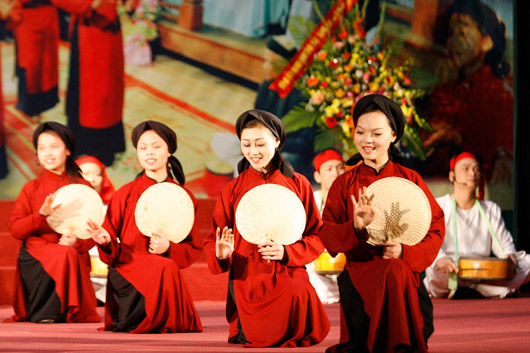
Photo: baochinhphu.vn
Hat xoan possesses all the essential qualifications to be acknowledged by UNESCO as an Intangible Cultural Heritage of Humanity. It is an age-old musical tradition that encompasses cultural, historical, and artistic components, distinguished by its distinct lyrics and melody. Not only that, this art form has also been safeguarded by the community for centuries, remaining prevalent in modern times.
5. Cong chieng Tay Nguyen (Central Highlands Gongs)
Central Highlands - The mountainous region of Vietnam includes five provinces of Gia Lai, Dak Lak, Dak Nong, Lam Dong, and Kon Tum within the Space of Gong culture which was recognized as “Masterpieces of the Oral and Intangible Cultural Heritage of Humanity” by UNESCO in 2005.
Regarding ethnic minorities living in the Central Highlands such as Ede and Ba Na, gongs and the practice of Cong chieng Tay Nguyen serve as a way to confirm the group's sense of belonging and cultural heritage. The special musical instrument called Gongs is a sacred means of communication between humans and the spirit realm. They are crafted from a combination of bronze and silver, with unique attributes. The resonance of gongs, mostly performed by male groups, can be described as profound or powerful, as it blends harmoniously with the natural elements of streams, wind, and human emotions.
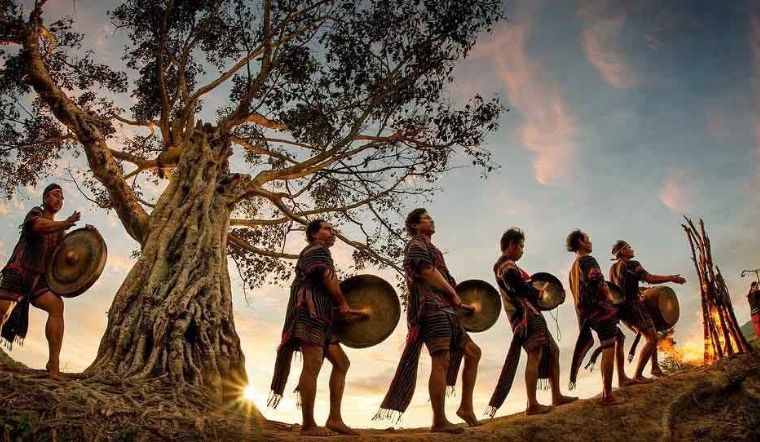
Photo: Internet
Each year, the Central Highlands Gong Festival is organized in these five provinces. The festival grounds will be transformed to reflect the vibrant colors and traditional customs of the various ethnic groups, showcasing and celebrating their inherent cultural values.